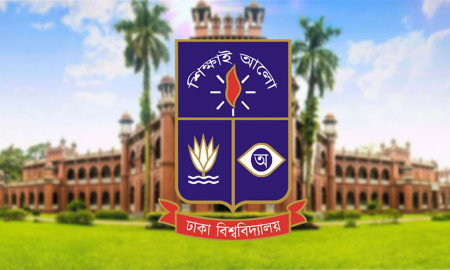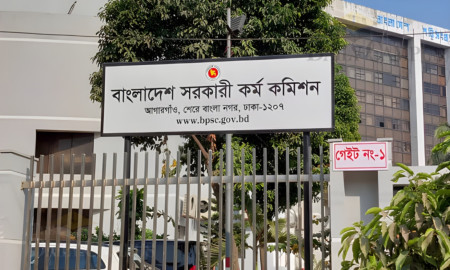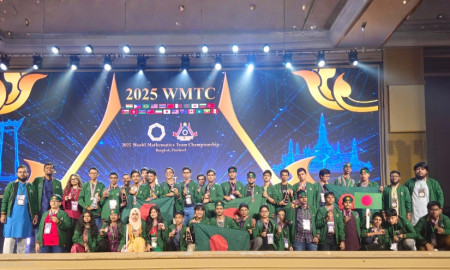Infrastructure and National Pride: A Journey from the Bay Bridge to the Padma Bridge

As a child, I was always glued to the car window whenever we travelled, mesmerised by the structures we passed. The San Francisco skyline from the Bay Bridge, the glittering lights of London seen from Tower Bridge, the breathtaking Hong Kong–Zhuhai–Macau Bridge as our plane descended. These were more than just concrete and steel to me. They were symbols of a nation’s ambition, proof of what a people can achieve when they decide to build something extraordinary.
That childhood fascination never left me. It grew stronger and eventually guided me toward civil engineering, a field that would let me plan, design, and one day create the very landmarks that once left me speechless. My dream is not only to build structures that are functional and beautiful, but ones that fill citizens with genuine pride.
In the summer after my junior year of high school, my family returned to Bangladesh, our motherland, for the first time since 2018. I was no longer the eight-year-old who had last visited; I was now a teenager with a deeper appreciation for infrastructure and a stronger connection to my roots. I was eager to see the country through fresh eyes.
Touching down at Hazrat Shahjalal International Airport in Dhaka, I was struck by an unexpected thought: the terminal felt surprisingly small compared to Sacramento International Airport back home, an airport that mainly serves domestic flights and a handful of routes to Mexico and Canada. How could one of Bangladesh’s three international airports, serving a nation of over 170 million people, be smaller than SMF? Yet what overwhelmed me next was not the size, but the pride. Outside the terminal, taxi drivers, rickshaw pullers, even off-duty soldiers were taking selfies with the airport in the background, people who weren’t even flying anywhere. That raw, unfiltered joy taught me something important: pride in infrastructure is not measured in square footage, but in the hearts it touches.
A few weeks later, we travelled south to Satkhira, my mother’s ancestral village. The journey required crossing the Padma Bridge, a project I had only heard about in stories. Having driven across many famous bridges, I didn’t expect to be particularly impressed. I was wrong.
Spanning 6.15 kilometres across one of South Asia’s widest and most turbulent rivers, the Padma Bridge is an engineering marvel. But its true greatness lies in its story. For decades, Bangladesh relied on foreign loans and foreign contractors to build its major projects. The Padma Bridge broke that cycle. Funded entirely by the government of Bangladesh and constructed by Bangladeshi engineers and workers, it has become a national icon. As we crossed, traffic slowed not because of congestion, but because drivers were pulling over, stepping out of their vehicles, and taking photographs, just like they did at the airport. In that moment, I understood: this bridge is more than a river crossing. It is a declaration of self-reliance and a source of collective pride.
Returning to the United States, I couldn’t help but compare. Many iconic American projects, highways, airports, even some bridges, are ageing and in desperate need of repair. Major new builds often rely heavily on foreign expertise and labour. Where, I wondered, is the same sense of ownership and celebration? Why don’t Americans stop on the Golden Gate or Brooklyn Bridge just to take proud selfies the way Bangladeshis do?
Looking wider across Asia, the contrast grows sharper. China boasts the 165-kilometre Danyang–Kunshan Grand Bridge and the futuristic mountain-hugging city of Chongqing. Japan’s Shinkansen bullet trains glide at 320 km/h on clean electric power. These nations are not just building infrastructure; they are building it with innovation, environmental consciousness, and unmistakable national pride.
My journey from the Bay Bridge to the Padma Bridge has taught me a profound lesson: great infrastructure is never just about concrete and steel. It is about identity, resilience, and the stories a nation chooses to tell about itself. The overwhelming joy I witnessed in Bangladesh did not come from the size of the airport or the length of the bridge, but from knowing that Bangladeshis built them with their own hands and their own money.
As I prepare to study civil engineering, I carry this truth with me. The structures we design must do more than stand. They must inspire. They must remind every citizen who passes beneath or across them: “We built this. Together. And we can build even greater things tomorrow.”
Perhaps that is the challenge and the opportunity for every nation, including my home in America: to rediscover not just the ability to build, but the pride that comes from building as one people, for one future.












